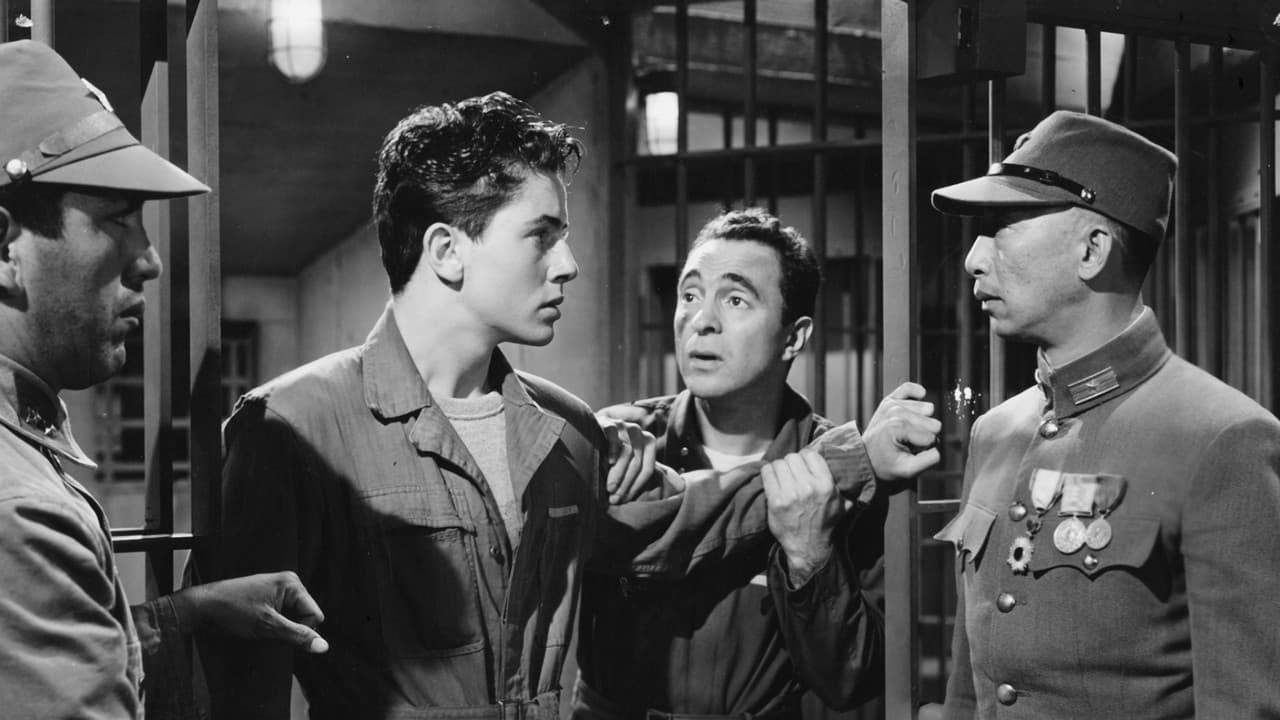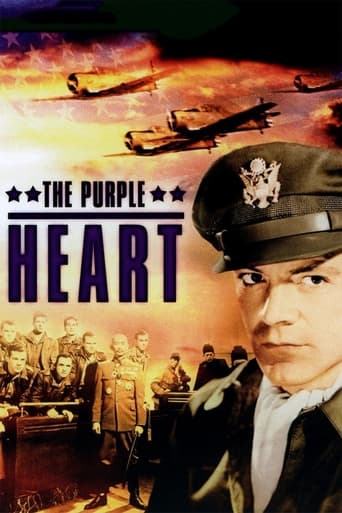Thehibikiew
Not even bad in a good way
Ceticultsot
Beautiful, moving film.
Alistair Olson
After playing with our expectations, this turns out to be a very different sort of film.
Payno
I think this is a new genre that they're all sort of working their way through it and haven't got all the kinks worked out yet but it's a genre that works for me.
ustye
Lieutenants Dean E. Hallmark, Robert J. Meder, Chase Nielsen, William G. Farrow, Robert L. Hite, and George Barr; and Corporals Harold A. Spatz and Jacob DeShazer were captured in April 1942. On August 15, 1942, the United States was told by the Swiss Consulate General in Shanghai; that Doolittle Raiders were prisoners of the Japanese at Police Headquarters in Shanghai, China. This movie is based on the real trial August 28, 1942 by the Imperial Japanese Military. The Americans were never told the charges. The Japanese announced the eight men were sentenced to death. The Japanese said a few of them had received commutation of their sentences by the Emperor Hirohito to life imprisonment. October 14, 1942, Hallmark, Farrow and Spatz were told they were to die and allowed to write a final letter to their family. At 5:30 pm on October 15, 1942, the three were executed by a firing squad at Shanghai's Public Cemetery Number 1. The bodies were cremated. The ashes were never sent to the families in the United States.The other five captured airmen remained in solitary confinement, tortured and starved, these men contracted dysentery and beriberi, their health deteriorating. In 1943, they were moved from Shanghai to Nanking. December 1, 1943, Meder died of the mistreatment. The remaining four men, Nielsen, Hite, Barr and DeShazer survived until they were freed by American troops in August 1945 after the surrender of the Japan.In February 1946, a War Crimes trial was held in Shanghai. Four Imperial Japanese officers were tried for the mistreatment and executions of the Doolittle Raiders. All were found guilty. Three of them were sentenced to five years at hard labor, the fourth to a nine-year sentence. The light sentences were met with outrage in the United States, that the Japanese soldiers were let off with murder. Hirohito in 1975, during a visit to the United States, refused to answer questions about the executed Doolittle Flyers.This movie was popular with the American public in 1944.
PWNYCNY
This is the quintessential World War Two movie. It has heroic American airmen, a sinister enemy, righteous indignation, and jingoistic dialogue that probably is unmatched by any other movie of its genre. The dialogue between Captain Ross and his interrogator, who wants, more then anything else, to find out where the Americans launched their attack, emphasizes the point that America is angry and will stop at nothing to defeat what it considers to be an evil enemy. And when the Americans are put on trial, their resolve deepens, even as they are subjected to humiliation and torture. It's easy to dismiss this movie as mere World War Two propaganda, with two-dimensional portrayals and a slanted, pro-war point of view, yet such a conclusion would fail to take into consideration the fine acting, fast-paced action, compelling story and powerful dialogue that makes this movie more than just a celluloid polemic, but a credible work of art.
tom sawyer
The Purple Heart is one of those movies that stays with you. Yes, there is some sentimental and patriotic themese and stereotypes in it. But, considering that it was made during wartime when, while the war may have no longer been in doubt by 1944, it was far from over. The performances by Dana Andrews, and others as the basically doomed American flyers was very good. They managed to not only evoke sympathy and sorrow for their predicament, but strength, bravery and loyalty. If anybody thinks the Japanese portrayals were over the top or unrealistic, then go read the Rape of Nanking and about the Bataan Death March and the real building of the Bridge on the River Kwai. Putting it bluntly, I know a number of veterans who wished we dropped at least six more atomic bombs on the Japanese to pay them back for their cruelties and war crimes. For its time, the movie was pretty accurate and dead on historically. The performances are riveting.All in all it is a pretty good portrayal of how the Japanese actually were. As for the knucklehead who said that we started the war, go read a book meathead. The Japanese actually attacked us before Pearl Harbor near Nanking and the U.S.S. Panay incident where they bombed our gunboat that was a neutral country. This led to the boycotting of materials to the Japanese mainland.
narmer71
The story of the fate of a captured American bomber crew from the first air raid on Tokyo. Dana Andrews final speech (taken from a Portugese reporter's news story) to the court is the most moving ever made in a motion picture. Purple Heart produced such a strong emotional response that it was banned in many American cities as detrimental to the war effort.

